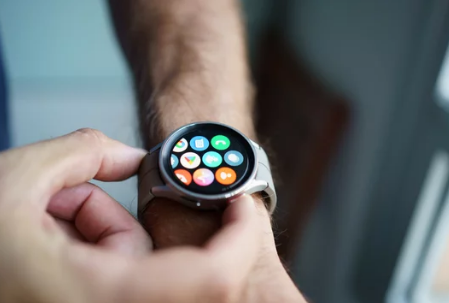In an age where smartphones have become digital vaults of personal information, sharing files between iOS and Android isn’t just about convenience—it’s about privacy. Whether you’re transferring photos, documents, or business files, you need to ensure your shared data doesn’t fall into the wrong hands.
Both iOS (Apple’s ecosystem) and Android (used by Samsung, Google, and others) offer built-in tools for data transfer, but privacy depends on the method you choose and the precautions you take. This guide will show you how to keep your shared data private when moving between iOS and Android devices.
1. Use Official Transfer Tools First
The safest way to transfer data is to use the official apps designed by Apple and Samsung.
- Move to iOS (Android → iPhone): Creates a secure Wi-Fi connection between devices and encrypts the data during transfer.
- Samsung Smart Switch (iPhone → Samsung): Supports both wired and wireless transfers with encryption.
✅ Why it’s safe: No third-party servers are involved—data flows directly from one device to the other.
❌ Privacy risk: Limited to migration tasks (e.g., moving to a new phone), not for everyday file sharing.
2. Stick With Encrypted Messaging Apps
For everyday file sharing, use apps with end-to-end encryption (E2EE). This ensures that only you and the recipient can read the files, not even the service provider.
- WhatsApp: E2EE for all chats and media transfers.
- Signal: Highly recommended for security, with encrypted calls and file transfers.
- Telegram (Secret Chats): Optional encrypted chats for sensitive sharing.
✅ Why it’s safe: Files cannot be intercepted by hackers or companies.
❌ Privacy risk: File size limits (e.g., WhatsApp caps documents at 100MB).
3. Secure Cloud Sharing With Extra Protection
Cloud services like Google Drive, iCloud, OneDrive, and Dropbox are widely used for cross-platform file sharing. While these services use encryption, your privacy depends on how you secure your account.
- Enable two-factor authentication (2FA).
- Use strong, unique passwords.
- Share files with time-limited or password-protected links.
✅ Why it’s safe: Files are encrypted in transit and at rest.
❌ Privacy risk: If your account is compromised, so are your files.
4. Encrypt Files Before Sharing
For maximum control over your data:
- Compress files into ZIP or RAR archives.
- Add a password before sending.
- Share the password separately via another secure channel.
Apps like iZip, WinZip, or 7Zipper make this easy on both iOS and Android.
✅ Why it’s safe: Even if someone intercepts the file, they can’t open it without the password.
❌ Privacy risk: If you use a weak password, encryption can be broken.
5. Avoid Public Wi-Fi Without a VPN
Public Wi-Fi networks (cafés, airports, hotels) are hotspots for hackers to intercept your transfers.
- Use a VPN (Virtual Private Network) to encrypt all internet traffic.
- Or switch to a mobile hotspot instead of public Wi-Fi.
✅ Why it’s safe: VPNs mask your IP and encrypt your data against snooping.
❌ Privacy risk: Without a VPN, sensitive files are exposed to network attacks.
6. Manage App Permissions Wisely
Some file-sharing apps ask for broad permissions such as contacts, location, or full storage access. This could compromise your privacy if abused.
- Grant only the minimum permissions required.
- Check privacy policies before installing apps.
- Regularly audit app permissions in your phone’s settings.
✅ Why it’s safe: Reduces unnecessary data exposure.
❌ Privacy risk: Rogue apps could misuse sensitive data.
7. Keep Devices Updated
Both Apple and Google regularly release updates that patch security vulnerabilities. If your phone is out of date, hackers can exploit old bugs.
- Enable automatic updates for iOS and Android.
- Keep sharing apps up to date (e.g., WhatsApp, Google Drive, Dropbox).
✅ Why it’s safe: Protects you from known security flaws.
❌ Privacy risk: Delaying updates leaves your files vulnerable.
8. Verify Recipients Before Sending
A simple but often overlooked privacy step: always double-check who you’re sending files to.
- Make sure the phone number, email, or device name is correct.
- When using QR codes (e.g., in apps like Send Anywhere), confirm that the code matches the recipient’s device.
✅ Why it’s safe: Prevents accidental data leaks.
❌ Privacy risk: Sending sensitive files to the wrong person is irreversible.
9. Clean Up After Transfers
Once files have been successfully shared:
- Delete temporary copies or caches.
- Wipe shared folders if they’re no longer needed.
- For old devices, perform a factory reset before selling or recycling.
✅ Why it’s safe: Reduces the risk of forgotten files being accessed later.
Final Thoughts
Keeping your shared data private on iOS and Android isn’t about using one magic tool—it’s about combining secure apps, encrypted transfers, and smart privacy habits.
To recap:
- Use official transfer tools for migration.
- Choose E2EE apps like WhatsApp or Signal for everyday sharing.
- Strengthen cloud security with passwords and 2FA.
- Avoid public Wi-Fi without VPNs.
- Always update, verify, and clean up after transfers.
By following these steps, you’ll ensure your files remain private and protected—whether you’re switching phones, collaborating on work projects, or simply sending family photos.
Also Read :
